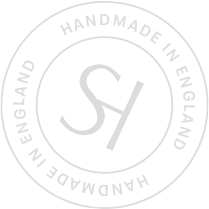Could you write down every piece of clothing you own right now? Better yet can you remember the last time you wore each item? We’ve discussed staples and capsule wardrobes before, but this time we’re digging into how a mindful wardrobe can save the world.
Sustainability and ethics in fashion aren’t just trends. They’re realities we need to accept and adapt to. Fashion has come a long way from being a luxury only the super-rich could afford. In the 19th Century, people got crafty and started making their own clothes. Unfortunately, this thrifty way of living slowed down as fashion production became more efficient and fast-fashion came into play in the last few decades. Above all else, there has been an apparent decline in appreciation for the clothes we own, and a disposable attitude has taken its place.
TRENDS TO TRASH
With runways and celebrities inspiring companies to put their production lines on steroids, trends quickly become trash. Not only does the waste put a strain on our planet, but the process of manufacturing the materials often has devastating repercussions. However, it’s not all doom and gloom. There are plenty of ways you can get educated and start introducing effective changes to your shopping habits.
SUSTAINABILITY AT SASSI HOLFORD
At Sassi Holford, we don’t claim to be perfect, but we do our best and are continually looking for ways to improve. We’re proud that all our garments are made in the UK by some of the most talented artisans who ensure they’ll last. We champion individual style and expression over imitating fads. We prefer making our bridal gowns to order, we keep our fashion collections small, and we want to be the most sustainable designer label we can be.
In this article, you’ll find a break down of what fast-fashion is, why it’s a problem and easy ways we can do better by our planet.

WOOLLY TERMS UNRAVELLED
With so many brands throwing around these words, it can be tricky to know who to believe. Here is a summary of what they mean:
Ethical | is a broader, umbrella term used to describe responsible and humane processes taken to make a product from creation to distribution and beyond. There are no set of rules to determine what makes a brand ethical, other than being morally sound. Therefore, how ethical a brand is is dependent on the values a customer deems essential.
Sustainable | For a product to be sustainable, it’s often made to environmentally-friendly standards. This includes being made from eco fibres like linen, material offcuts, upcycled, reclaimed and recycled textiles. Find a complete list of eco-reviewed threads here.
WHAT IS FAST-FASHION?
Fast-fashion is a business model whereby brands imitate catwalk and celebrity trends and produce them at a whiplash-inducing speed. British journalist Lucy Siegle has investigated the environmental impact of clothing. She highlighted in her TEDx Talk that “We now have 52-plus collections a year, some brands up to two or three collections a week. If you don’t buy it now, you won’t get it next time because they don’t restock.” Not only does this breed a negative mindset of ‘needing’ the latest thing, but it’s made fashion one of the most polluting industries. Which begs the question, how did we get to this point?
Clothes became easier, quicker and cheaper to make after new technology came about during the Industrial Revolution. Fashion was still slow. You had to source your fabrics, prepare them, construct them and then make the clothes. But as technology evolved, production speed increased, in many cases making humans redundant. As brands grew and started to mass-produce, work also was delegated overseas to cut costs.

WHY IS FAST-FASHION BAD?
Today we have overwhelming amounts of choice, not just in-store but online. Our appetite for fashion seems to be insatiable. Online shopping preys on our desire for convenience, which we often prioritise over ethics. We bulk order, then send back unwanted items. This accumulating more plastic packaging waste and increasing our carbon footprint in the process.
Furthermore, the lower price we often pay for clothes is usually at the cost of others. In countries such as India, workers are struggling to keep up with the West’s constant demand for more. Cheap labour costs entice brands to outsource their manufacturing to Asia; where worker’s rights are relatively non-existent, and the pay is dismal. Sustain Your Style reported that garment workers are often forced to work 14 to 16 hours a day, seven days a week. During peak season, they may work until 2 or 3 am to meet the fashion brand’s deadline. It’s good to look for brands who are transparent about where they make their products. Otherwise, they may have something to hide.
Fashion may seem glamorous, but it has a dirty side. Textile dyeing is the second largest polluter of clean water globally, after agriculture. When Stacey Dooley visited the Aral Sea, in central Asia, she was shocked to find that what was once one of the biggest inland seas had practically disappeared. In her documentary, Stacey Dooley Investigates, reveals that the Aral is vanishing. The rivers flowing into it have been diverted to cotton farms nearby. Essentially, this devastation is a result of cotton production on an irresponsible, industrial scale.
Useful websites
These are just some of the issues with fast-fashion, but if you’d like to learn more, there are plenty of great informative websites. These include:
WHAT IS SLOW FASHION?
Slow fashion is a movement that aims to combat the fall out of fast-fashion and to quite literally slow it down. It encourages designing, creating, and buying garments for quality and durability. It also means more realistic production schedules, fair wages, lower carbon footprints, and (ideally) zero waste. To engage with slow fashion, you need to prioritise buying quality over quantity. The other focus of slow-fashion is celebrating the skill of craftspeople and the art of garment making.
Some characteristics of a slow fashion brand:
- Made from high quality, sustainable materials
- Often in smaller (local) stores rather than chain companies
- Locally sourced, produced and sold clothes
- They only release two or three collections a year

5 SIMPLE WAYS TO SHOP MORE SUSTAINABLY
As previously mentioned, ethical fashion is a complex issue. However, if consumers collectively start making more conscious choices, it can only have a positive impact. You can start with a change in mindset. Appreciating our pieces and keeping hold of them for a lot longer than we currently do. More practical actions you can take include:
- Research brands before you buy
Check if the brand you’re about to buy from has a page on their website dedicated to their environmental efforts and values. - Get crafty
As aforementioned, back in the day if you wanted a particular outfit, you made it yourself. Take a sewing class, or if you’d prefer to reinvent what you already have. Mend broken pieces, reheel shoes, and modernise old clothes. - Shop second-hand
A common reaction to the slow and sustainable fashion movement is that it’s too expensive. However, if you plan your capsule wardrobe, you can be strategic about how you shop. Or visit a thrift store or charity shop. - ’30 wear’ rule
Break the consume-and-chuck cycle with Lucy Siegel ’30 wear’ rule. “As soon as a garment catches my eye, I need to stop and think, ‘Will I wear it 30 times or more?'” Check out Lucy’s book To Die For: Is Fashion Wearing Out The World. - Consider the material
Cotton uses a lot of water while polyester is a synthetic fibre derived from oil. Unfortunately, these fabrics tend to dominate our wardrobes. Luckily organic cotton is grown using methods and materials that have a low impact on the environment, so look for that instead.Avoid PVC at all costs, even if the trend makes its millionth comeback. Of all the different types of plastic in the world, PVC is the most environmentally damaging. Look out for eco-friendly materials like linen and flax.
SUSTAINABLE INFLUENCERS TO FOLLOW
Follow these sustainable fashion influencers for daily inspiration on mindful shopping and lasting style.
Summary
There is a long way to go, and plenty more to unpack within this subject, but we hope this has inspired you to think differently. Style and sustainability can co-exist, you just need to know where to look and what to buy – or better yet, not buy. Explore our fashion collection for pieces that have been made with love and sustainable materials. And remember, trends come and go so invest in your personal style and build a wardrobe of pieces that will last a lifetime.






